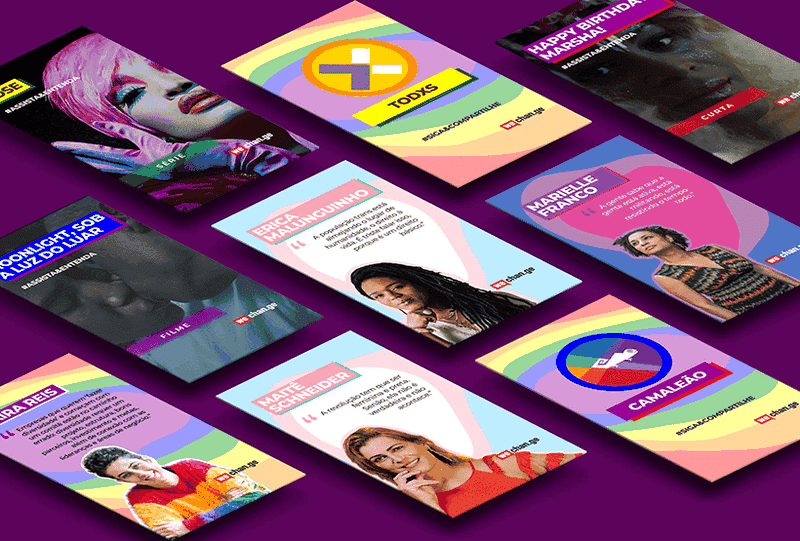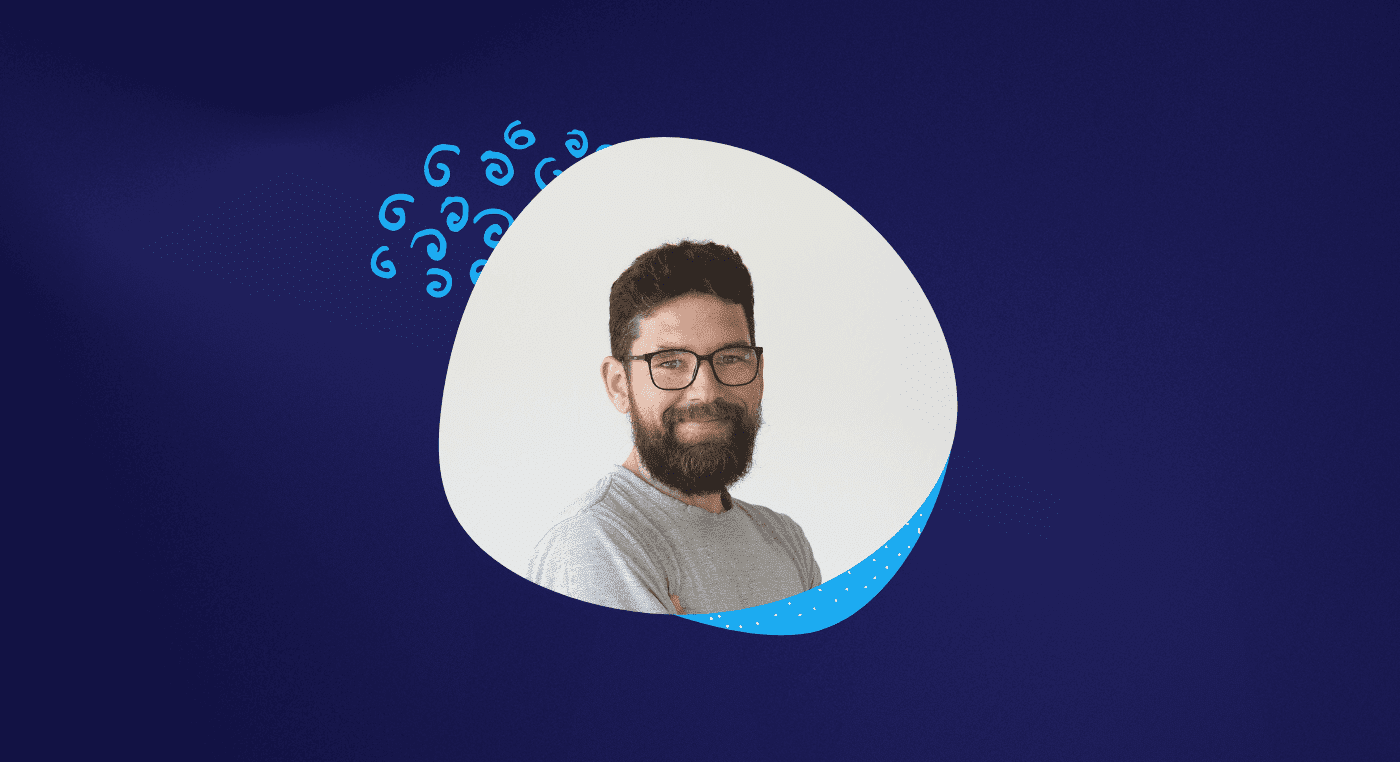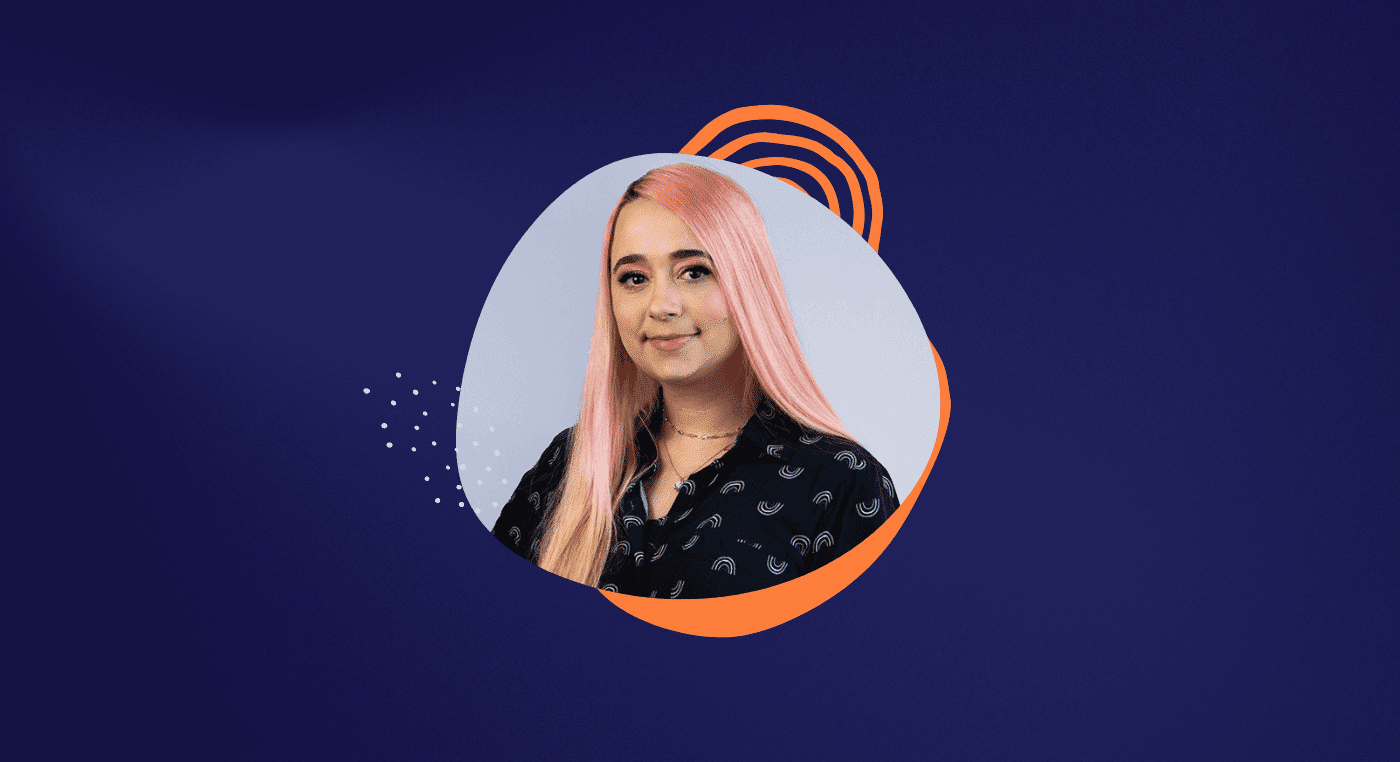She tells us how she decided to change from Industrial Design to UX and how researching the company helped her land her first job in the field.
Read on for Rafaela's story and get inspired!
Rafaela, let's start with an introduction!
Hi there! I'm Rafaela, an Industrial Design graduate who worked in physical product design up until 2018.
In 2019, I shifted my focus to Graphic Design and began working on the visual aspects of design. However, my job came to an end towards the end of the year. That's when I decided to delve into UX Design, research, and processes, and gain a more holistic view of design.
Around that same time, the pandemic hit and I started studying extensively by making use of the free content available on the internet.

What attracted you to UX Design?
Actually, it all started with a conversation with a friend of mine.
He already works with UX Design and said that this profession would be a great fit for me because I had already worked with research before.
When he mentioned that UX is a growing field, I became interested, researched, and found out about Aela and the MID program.
Reading Tip: UX Design: Do You Fit The Profile?
How did you find good materials to study UX Design?
In the beginning, it's really difficult to filter through all the available materials.
There's so much information, books, articles, and courses. You don't even know where to start.
I think one way I found was to focus on some specific part or process. At first, I wanted to learn everything at once, and that eventually hindered me.
Over time, you also create a natural filter and know how to identify what's good and what's bad.
Something that I found very interesting was participating in Aela's workshop and seeing many people there recommending other materials, articles, and different content.
When did you actually secure your first role in UX?
I attended the workshop in April, and in August, I got the job.
In fact, another student posted in our Slack community that this company had an open opportunity for UX Design.
At that time, I was still at level zero in the MID, and I thought I couldn't apply as a UX Designer yet.
However, I decided to research more about the company and what they were looking for to understand what skills were required for the job.
Through this research about the company, I saw that it was based here in Rio de Janeiro, and they were also in need of a Visual Designer. But in the description of this job, they made it clear that it was a good opportunity for those who also wanted to work with UX Design and product.
When I saw this opportunity, I thought, "It's the ideal job for my moment!"
So, I ended up applying for another position, just because I researched more about the company.
How was the interview process for that job?
It was a very honest conversation, actually.
I had been looking for a job for some time, sending out resumes, and doing interviews, but with no response. And this situation was already causing complications because, after a while without a job, you just want something to pay your bills.
In this sense, I was already quite discouraged at the time when I went for the interview for this company.
But I was very honest with the recruiter about where I was in my career. I mentioned that I was in the process of transitioning to UX Design and that my background is in Graphic Design.
There was an interview with the company director, and my speech was equally honest. I said that I really wanted to transition and that I was very interested in learning about UX.
They liked me, and I started working for the company the following week! And it's a cool job and exactly what I was looking for.
Reading Tip: Do I Need a Design Background to Switch to UX?
Do you already envision how to switch to UX Design within the company?
The company I work for is great and is very concerned about the development of its employees.
I feel that the change and transition to a more UX-focused area will be natural because, although my position is more visual, I am involved in the entire process and all project development meetings.
Therefore, I have plenty of opportunities to learn about the processes and make the transition within the company.

What is the structure of your team?
There are only a few people working in this small company, like an agency, in fact.
Most of the team is from Rio, but there are also people from São Paulo and Paris, which makes us a global team.
Despite being small, we serve big clients like Google, Nestlé, and Coca-Cola. In this sense, we have a multidisciplinary team that can work on any project.
The most interesting thing is that everyone in the company has this macro vision of applying knowledge from one project to another. Everyone works really closely together and that, for me, is fantastic.
What is your role within this team?
In every briefing meeting with the client, there is a Visual Designer, a UX Designer, and the project manager. This dynamic makes communication better and everyone is on the same page.
From there, the UX Design team starts formulating research, testing, and ideation. We receive this material as a product brief and what needs to be done.
Thus, we develop wireframes, show them to the client, and if necessary, we also present the Key Visuals.
And we evolve in this way, continually improving the final product until it is approved by the client.
After approval, developers apply the design to create the product itself.
Is this role what you were aiming for before or are you still aiming for more than that?
I'm really loving working here and enjoying what I'm doing. It's great to see your work being shared out there.
I realized that I really like UX Design, but I'm really more UI driven. In this sense, I like to do the closing part of the second diamond and see things becoming more real.
Reading Tip: Double Diamond To Help Define What The Real Problem Is
Which of the UX Design knowledge is helping you and being useful at work?
I think the part of research and knowing the persona/user helps a lot in the visual part at the end of the process.
Having everything well determined about who you should be doing the work for prevents you from working aimlessly.
If you don't know who you're making the product for, you won't even know which colors to work with.
Therefore, I think that knowing the user and researching them is essential for the whole process, including the visual part.

What would you say was your best learning experience to get this job?
Something that helped me a lot was the contact with the community of people who are transitioning or already working in the field. With that, I was able to get tips, watch interviews, read different content, and listen to experiences.
Feeling lonely on this path is very bad. Therefore, finding this community and support network is very important.
The community constantly reminds us that you are not alone and that there is a good opportunity waiting for you out there and that your time will come!
The experience that these people have and share with us is very valuable!
So, my tip for those who are thinking of transitioning is: have contact with people!
Was there any part of the interview that was more challenging?
Actually, this interview was pretty easy. I think the fact that I was calm helped too. In addition, the chat with the director was more casual, which also helped.
But overall, if you can't see yourself passionate about the company or what it does, it's difficult to show recruiters the reasons why you want to work there.
How did this involvement with this company happen? Was it natural or did you have a step-by-step process?
I believe it was a bit of both.
The fact that I researched the company gave me information about what they do and which projects they develop.
I even identified with the way the company presents itself on social media, LinkedIn, etc.
In this sense, they are not bureaucratic, and this made me even more attracted to them.
That's why researching the company is very important. Understanding the internal environment, which projects they do, and what people who have worked there say.
It is a step that everyone should take.
What would you say is the best way to look for a job today?
I think the first question is to understand exactly what you want. That is, understand if you like UX Design, UI, or another part of the process or area.
This is because working with something you don't like can be very discouraging in the long run. So, reflecting on your desires is fundamental.
In addition, update your LinkedIn profile, talk to people from companies and the market, creating networking.
Reading Tip: LinkedIn for Designers: Tips to Boost Your Profile
What would you say to your past self?
I would say to have patience, for sure!
Patience is a great lesson. Trust the process as well.
Sometimes, when you are in the middle of the process, you may not yet understand what will happen or feel insecure. But trust, because, in the end, you will see that everything you went through will be worth it!

Would you like to give one last piece of advice?
I think the main thing is to never stop studying, to continue to update yourself.
Otherwise, you will become stagnant and stuck in the past, making it difficult for new and good opportunities to appear. I think that's it. Study a lot, trust the process, and be patient! These are the 3 important points that I can mention.







